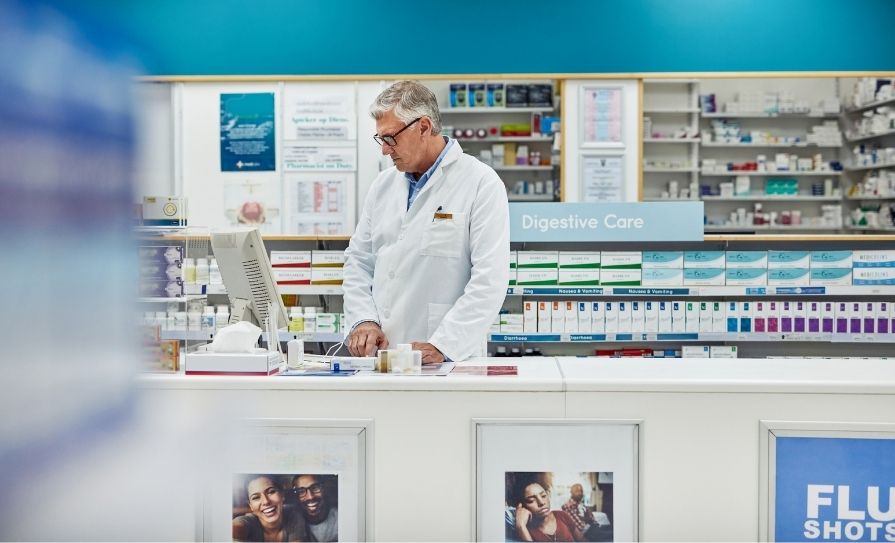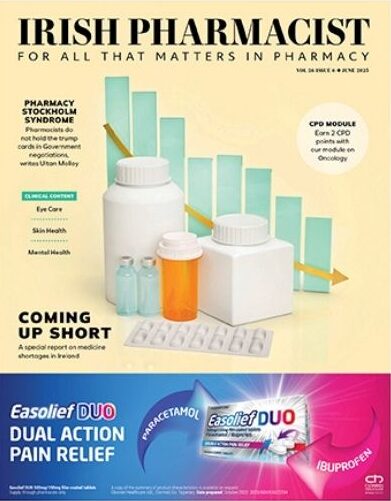TERRY MAGUIRE REFLECTS ON THE WIDE RANGE OF SOMETIMES CONTRADICTORY RECOMMENDATIONS AND OPINIONS AS THE PANDEMIC DEVELOPED
In late December, as the Christmas tree lights twinkled in windows along our street and I should have been enjoying a much-needed break from work, I could only worry that I might be unable to open the pharmacy in the days and weeks after the festive break. The Omicron variant of Covid-19 was identified as sensationally infectious and, as Michael Osterholm, a leading American infectious control expert was saying, there would be a “blizzard of infections” in the first weeks of January unprecedented in this pandemic.
It was very likely that some if not all of my staff — myself included — would catch the virus or would be in close contact with someone who was PCR-positive and with or without symptoms. I ruminated over different scenarios. Staff members would text me to say that they are out of work for the mandatory seven or 10 days, and I would try to negotiate that we stick strictly to the rules, which means they can come to work if fully vaccinated and had only been a close contact, but they might challenge the ethics of me forcing them to work while potentially brimming with a deadly pathogen.
Yet at that dark point of the year, Omicron was ironically offering a glimmer of hope, a small glimmer of hope most in authority were careful not to seem too hopeful about, and that was that Omicron might turn out to be a pussycat rather than a tiger when it comes to hospitalising and killing Homo sapiens. Was this too much to hope for? By January end, would we be living in a post-pandemic world? The experts whom I normally listen to were in total disagreement.
I listened to the views of Dr John Campbell, a UK commentator on all things Covid who was by year-end very upbeat. Dr John, a nurse by training and a YouTube celebrity in a nerdy sort of way, was following the trajectory of the Omicron variant in South Africa, where it got a head start in November 2021. Infectious yes, deadly no, and overtaking Delta — which was good, as Delta could be a serious respiratory infection if you are fat and old.
Michael Osterholm assessed the same scientific papers as Dr John, but was much less sanguine and his views much starker. Osterholm was downbeat and defeated. Will Omicron be less virulent than Delta, Alpha and the wild strains of Covid-19? Not necessarily, he felt. Will the sheer numbers infected people negate the lower virulence of this variant? Yes, he was convinced. He was suggesting a really difficult time for all until the spring of 2022 and he was calling on the US government to implement a hard lockdown, even though the American people had long ago lost any appetite for lockdown.
Of course, its complex and it will be different from country-to-country. The US, where Michael Osterholm resides, has potentially too low a vaccination rate to fully blunt the impact of Omicron. Even if Omicron does prove less virulent, we are in a very different world to the one that locked down as the Alpha variant surged in January 2021.
But in the UK, Omicron is surging in a protected population. There is now a very high percentage of the UK and Irish population vaccinated, and a higher percentage still that have effective antibodies. We still get infected, but are protected against being rushed off to hospital or ending up in the morgue.
By early January, this was the emerging picture. An increase in hospitalisations in London, the seat of the UK Omicron surge, but there may be other explanations as to why this is happening. No differentiation existed between those hospitalised ‘because of’ Covid rather than ‘with’ Covid-19. South African medics were quick to point this out very early in their surge. They were finding most people categorised with Covid-19 were hospitalised for other reasons and it should be remembered that in the week or two before Christmas, most people will avoid going to hospital, leading to a surge when the turkey and cranberry are in the food bin.
My business is a very minor player in our health service and, like all parts of the system, social, primary and secondary care managers, like me, were very worried about business continuity as we quietly ushered in 2022.
Where the US had already stepped-down isolation requirements from 10 days to five days for a symptoms-positive case, the UK had only reduced isolation from 10 days to seven days where day six and seven were negative on a lateral flow test (LFT). There was a political push to get the UK to the five days of isolation where disruption to services would be minimal. But the experts did not agree.
Covid infections were twice as likely on day five compared to day seven, one study claimed. Almost twice as many people are still transmitting Covid-19 virus on day five of self-isolation, compared to day seven. Modelling from the UK Health Security Agency (UKHSA) showed that one-in-three people — 31 per cent — were still infectious five days after first testing positive for Covid-19. In contrast, just one-in-six (16 per cent) are able to pass on the virus to others by the seventh day of self-isolation. Experts said the findings show that ministers would be very wrong if they decide to cut the self-isolation period from seven to five days, with the proposed change in policy currently under consideration by the government.
One such expert was Prof Irene Petersen, who warned that ministers might “shoot themselves in the foot if they go for five days”. She added: “If you release people after five days you gain a certain percentage of the workforce, but if a third is still infectious, you may end up losing a greater number of people as a result.”
It proved a disastrous start to the New Year. Three key members of staff had to self-isolate from New Year’s Eve and only returned to work on 10 January 2022. That day, our driver reported a positive LFT, as did a counter staff member, and off they went. I was so desperate to bring staff back as soon as possible that I didn’t care whether it might result in a larger proportion being ill in a few weeks, but I now know that was wrong-headed. Sense prevailed and staff isolated, as they were required to, and we got through it but as we settle into late January and all again seems well with the brightening world, I reflect back to the first crisis days of 2022, when I was keeping open the doors of my pharmacy with conscripted family members and I realise that that strong head-cold and fever I was suffering from might have been more than the common cold.







